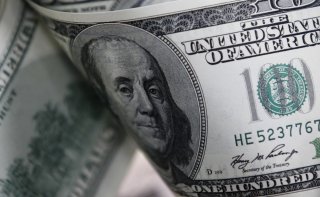$1,400 Stimulus Checks Mailed Out March 26: What If it Never Arrived?
In a recent update, the IRS acknowledged that most non-filers weren’t included in the current batch, as it focused on sending out payments to those who filed a tax return in 2019 or 2020. It also included individuals who didn’t file a return but were able to register with the IRS non-filers tool.
Within the past week, the Internal Revenue Service and U.S. Treasury have worked around the clock to send out a hundred twenty-seven million coronavirus relief checks to financially struggling Americans.
There are, however, still millions of cash-strapped Americans still wondering when they’ll get their hands on the stimulus funds. If you’re part of that unlucky group, know that for the latest batch of payments, the IRS mailed out on March 26 a large number of paper checks and prepaid debit cards.
“The IRS continues to send the third round of stimulus payments in record time,” IRS Commissioner Chuck Rettig said in a statement. “Since this new set of payments will include more mailed payments, we urge people to carefully watch their mail for a check or debit card in the coming weeks.”
In a recent update, the IRS acknowledged that most non-filers weren’t included in the current batch, as it focused on sending out payments to those who filed a tax return in 2019 or 2020. It also included individuals who didn’t file a return but were able to register with the IRS non-filers tool.
The agency also noted that it will potentially take weeks for nearly fifteen million paper checks totaling $34 billion and five million EIP cards, a prepaid debit card that one must activate online before using, totaling $11 billion to reach Americans’ mailboxes via traditional mail.
If you’re still seeking a more concrete date on when the money will arrive, there are indeed several options available to you.
First, confirm your eligibility for the stimulus check and head over to the IRS “Get My Payment” tool at www.irs.gov/coronavirus/get-my-payment. To use it, you will just need to enter your full Social Security or tax ID number, date of birth, street address, and ZIP code. Be aware that you don’t have to waste your days by constantly checking on the site, as the IRS says that the tool “updates once per day, usually overnight.”
However, keep in mind that some individuals will receive the dreaded message that says, “Payment Status Not Available.” “If you get this message, either we have not yet processed your payment, or you are not eligible for a payment,” the IRS says. “We will continue to send the 2021 Economic Impact Payment to eligible individuals throughout 2021.”
Know that others will get a “Need More Information” message, which means that the stimulus check was returned to the IRS because the post office was unable to deliver it. If your address has recently changed, the best way to update it is to “file your 2020 tax return with your current address, if you haven’t already done so. Once we receive your current address, we will reissue your payment,” the IRS noted.
You also have the handy option to track your USPS mail delivery. If this is a service you’re interested in, just sign up for Informed Delivery here, which enables you to digitally preview and manage USPS deliveries, such as your stimulus check or debit card.
“Informed Delivery provides eligible residential consumers with a digital preview of their household’s incoming mail scheduled to arrive soon,” the USPS website says. “Users can view greyscale images of the exterior, address side of incoming letter-sized mailpieces (not the inside contents) via email or an online dashboard.”
Finally, if you get a confirmation letter (Notice 1444 or Notice 1444-B) from the IRS stating that your payment was issued but you didn’t receive it, you can request an IRS payment trace. You can learn more about how to successfully do that here.
Ethen Kim Lieser is a Minneapolis-based Science and Tech Editor who has held posts at Google, The Korea Herald, Lincoln Journal Star, AsianWeek, and Arirang TV. Follow or contact him on LinkedIn.

